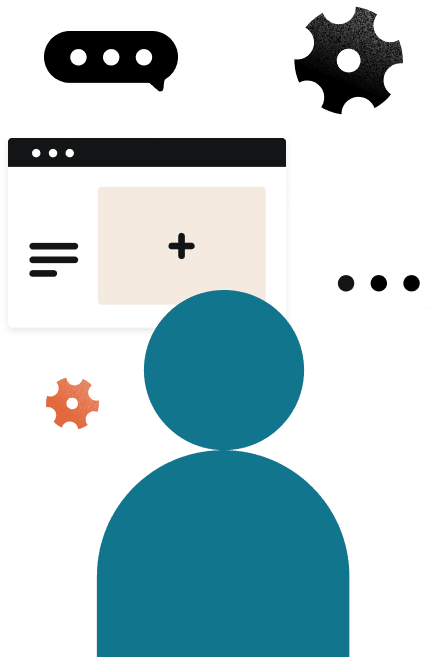Learn how to sell digital products online and boost your revenue. Discover profitable digital product ideas, the best platforms to sell them, and how to take payment and deliver products successfully.
Imagine this: You’ve already finished your work for the day, had multiple meetings with clients, and started a few projects. While you’re relaxing, a payment comes through for a download you posted on your website.
Without having to lift a finger, someone found your download and paid you for it.
As an independent business owner, you rely on your services to run your business and pay the bills. You don’t sell physical products, but you can start selling digital products to generate passive income.
How does it work? A digital product can really be anything that brings value to your audience, that’s also related to your business. Though it may not cover your full scope of services, it can be an add-on for an existing project or a la carte purchase for clients with a limited budget.
Learn how to sell digital products so you can start getting paid in your downtime!
Jump to:
- What are digital products and how can they increase business revenue?
- 7 steps to selling digital products
- What are some digital product ideas?
- What platform should you use for selling digital products
- Tips for selling digital products
- How to create a process for selling digital products
What are digital products and how can they increase business revenue?
As an independent business owner, you have likely experienced the ups and downs of trading time for money. Either you struggle to get enough clients in one month to hit your revenue goals, or you overbook yourself with no capacity to take on more work (or earnings). But what if you could boost your monthly revenue in a passive way?
Digital products cover a wide range of online resources that provide value to your clients, from digital templates to a full-blown educational products, online courses, and everything in between. After you create them once, you can sell them an infinite number of times. But can you make money selling digital products? Absolutely. They offer high-profit margins and scalability, allowing you to reach a global audience with minimal overhead. By leveraging online platforms and effective marketing, digital products can significantly boost your business revenue.
Selling online resources is, therefore, one of the most time-smart and profitable business models out there, as it involves no physical materials, storage, postage costs, and minimal overhead costs if any. Better yet, it is simple to build up the sale of digital products slowly alongside your core services.
7 steps to selling digital products
Learning how to sell digital products properly can transform your business. In the following sections, we will outline the steps and strategies for your business to excel in the digital product market. We’ll cover identifying profitable product ideas, selecting the right platforms, and establishing a seamless sales process. Additionally, we’ll explore effective marketing strategies, secure payment methods, and streamlined delivery options. By following these 7 steps, you can optimize your digital product sales and drive substantial business growth and revenue.
- Identify digital product ideas: Brainstorm and select digital products that align with your expertise and audience demand.
- Choose the right platform: Select a suitable ecommerce platform to host and sell your digital products, ensuring it meets your needs.
- Create a sales process: Develop a streamlined process for creating, marketing, selling, and delivering your digital products.
- Market your products: Use effective marketing strategies, including social media, email marketing, and SEO.
- Set up payment methods: Implement secure and convenient payment options for your customers.
- Deliver securely: Ensure your digital products are delivered securely to prevent unauthorized access.
- Track revenue: Monitor and analyze the revenue generated from your digital products to optimize sales strategies.
What are some digital product ideas?
All great digital products solve a problem for a client and provide exceptional value. While there are many types of digital products, the best-selling digital products often include online courses, eBooks, and digital templates. These products provide high value and appeal to a broad audience, making them popular choices for many digital entrepreneurs. By focusing on these top-selling categories, you can maximize your chances of success in the digital marketplace. Some of the best digital product examples include:
- Ebooks – Short digital books in downloadable PDF format that share valuable information on any topic
- Customizable templates – Done-with-you resources such as resume templates or email templates that people can fill in with their own information
- Online courses – If you have a skill, teach it to others through an online course that’s typically a mix of video and written content
- Digital downloads – PDF guides to digital checklists, from an SEO checklist for a blog post to a guide on taking the perfect Instagram photo with an iPhone
- Online DIY tutorials – Instead of doing it for the client, teach clients how to do it themselves, whether creating a logo or writing a web copy
- Membership sites – A monthly subscription model where you provide access to a platform regularly updated with valuable content in your chosen field
- Music, photos, and media – License and sell your creative outputs such as songs, photos, or audio recordings
What platform should you use for selling digital products?
Depending on the type of product you want to create, a variety of platforms exist to build and sell exceptional digital products. For example, you might want to try making downloadable files as PDFs on Canva or use the HoneyBook clientflow platform to manage your entire digital product process in the same place as your core business.
Here are a few examples of platforms built specifically for selling your digital items.
Etsy
You probably know Etsy as a marketplace for physical products, but it is also quickly becoming a popular place to sell digital products.
Known as an online store for creatives and unique sellers, some of the best non-physical products to sell on Etsy might include:
- Digital art downloads
- Sewing pattern downloads
- Templates for organization, resumes, etc.
- Digital journals
- Printable party decorations
The sales process is similar to that of physical products. You must first create a free account, set up the details of your store, like location and currency, select a name for your shop, and set up payment and billing. You will then create a listing for your digital product.
You have two options when it comes to selling digital products on Etsy:
- Instant download – Use this if you are selling a generic product that your potential customer can download instantly.
- Made to order – Use this if you are selling personalized products you need to customize first. It will appear as an open order until you upload the file and complete the sale.
When pricing your product, take into account Etsy’s fees.
Kajabi
If you plan to create an online course, having the right platform to host and sell your online course is vital. While it is possible to self-host if you set up your own server and see from your website, most entrepreneurs prefer the simplicity and ease of a hosting platform.
Kajabi is an all-inclusive course platform that allows you to upload videos, audio files, documents, and images in one place. This means your course is all packaged up in an easy-to-use platform for your clients.
Kajabi’s pipelines feature allows you to manage the entire sales funnel within the platform. You can automate an entire funnel from leads capture to the payment process, allowing you to take a hands-off sales approach.
Kajabi has the capabilities to:
- Build websites and landing pages
- Capture leads
- Send and automate email sequences
- Host videos
- Create blogs
- Have an in-course message board
- Accept payments
Thinkific
Thinkific is an online platform that allows you to host and sell a number of digital resources, like:
- Courses
- Communities
- Memberships
It is one of the platforms with a free option and no transaction fees, so if you are just dipping your toes in the digital product world, it is a good choice to get started.
Thinkific offers great features for creating video content and is a solid platform for building a course. It is also highly customizable, so you can align your content to your existing branding. It also offers multiple pricing and payment options for your products. For example, you can easily set up a recurring subscription fee for a membership.
Unlike Kajabi, Thinkific does not have integrated email marketing software or funnel-building features. However, it is compatible with other sales platforms, so you must use multiple tools to create a seamless sales system. If you are looking for a free course builder, Thinkific’s free plan is a solid option.
HoneyBook
HoneyBook is a clientflow management platform that helps independent business owners streamline their entire work process.
You can offer different services on the HoneyBook platform as well as sell digital products. This means you can seamlessly manage all your business operations in one place, including selling online resources and add-ons to existing clients.
HoneyBook has made it super simple to sell a digital product by adding it to a lead form. Now, when clients enquire about or book your services, they can easily purchase a digital product at the same time. Simply toggle the add a digital product link on a new or existing lead form and add the product URL. The integrated payment system means you can take payments directly through the platform.
With HoneyBook, you can easily share your digital products and start making sales in minutes.
How to create a process for selling digital products
After you’ve created a fantastic digital product offering and decided on the platform you’ll use to sell, it’s time to focus on how to sell digital products effectively. This involves developing a marketing strategy, optimizing your online presence, and ensuring seamless customer transactions.
Market your product
To market your product, you’ll need to determine a marketing strategy. A typical funnel for a digital product moves a buyer along this timeline: Awareness → interest → decision → action.
A sales funnel for a digital product might look like offering a downloadable product as a freebie to get in front of target clients and build an email list. You can then create a sales email sequence to market your product and a landing page with a persuasive copy to close the sale.
Once you have decided on your sales funnel, you can market your digital product in several ways. Remember to focus on developing compelling copy and providing testimonials and social proof when you can.
- Content marketing – Develop blog posts and long-form content to provide value to your target market. This will build trust and awareness, and you can also showcase the value of your product.
- Email marketing – This is a more direct form of sales. You can create sales sequences to advertise your product. You can also segment your email list and personalize campaigns for better results. Create urgency by offering a limited-time offer or a time-sensitive bonus with exclusive content. Save time and stress by automating your sales email sequences.
- Social media platforms – Social media is a great place to build an audience and sell digital products. Post regular valuable content on your social platforms to grow your audience and then talk about your products and offers in your stories or send people to your store.
- Influencer marketing – Reach out to influencers in your industry to see if they want to collaborate, share your product in exchange for you sharing theirs, or promote your product for a fee.
Accept payment
Accepting payment for digital products is made simple today with the various payment technologies available on the market. However, some platforms work better than others, and you should be wary of things like:
- Available currencies
- Exchange fees
- Transaction fees
Many digital product marketplaces and platforms have a built-in payment feature to take payments securely. If you are selling your products through your own website, you can usually integrate with Shopify or WooCommerce to create an online store and take payments. Or you can manage the sale of your services and digital products in one simple platform like HoneyBook.
Securely deliver digital products
Delivering non-physical resources securely is paramount to protecting your content, customer trust, and brand reputation. It can also help you prevent people from stealing or ripping off your content.
Some ways to securely deliver content include:
- Password-protecting digital files before distribution
- Adding watermarks to your content
- Using trusted platforms with secure delivery
- Setting limitations on how often a customer can download a product
- Utilizing SSL (Secure Sockets Layer) encryption on your website to secure data transmission during the purchase and download processes
How to track the revenue of your digital products
You likely already track your client-based business revenue. However, it is also important to track and factor in revenue from digital products as part of your overall online business strategy. It is possible to do this manually, but the process can be time-consuming and error-prone. As non-physical sales generate passive income, you must remember to monitor sales. We recommend automating your tracking using digital tools.
Use the built-in analytics features on your e-commerce platform to gain insights into product performance, customer behavior, and revenue trends. If your platform doesn’t include these features, consider using a separate tool to track sales and revenue.
To keep life simple and get a complete overview and analysis of your core services and digital products, HoneyBook automatically tracks and reports on all revenue your business generates.
Tips for selling digital products
Enhance your success in selling digital products with these practical tips designed to maximize your potential and streamline your process. Additionally, by integrating HoneyBook into your strategy, you can focus on creating even more value for your customers while ensuring a seamless and efficient selling experience. Here are some essential tips to get you started:
- Understand your audience: Conduct niche market research to identify your target audience and tailor your products to meet their needs.
- Offer high-quality content: Ensure your digital products are well-designed, valuable, and provide a great user experience.
- Utilize SEO strategies: Optimize your product listings and website with relevant keywords to improve visibility in search engines.
- Leverage social proof: Encourage satisfied customers to leave reviews and testimonials to build credibility and trust.
- Use effective marketing channels: Promote your products through social media channels, email marketing, and online ads to reach a broader audience.
- Provide excellent customer support: Offer timely and helpful customer service to address any issues and improve customer satisfaction.
- Continuously improve your products: Gather feedback and make necessary updates to ensure your digital products remain relevant and valuable.
Make digital products part of your cash flow
By selling digital products online, you can make them a consistent part of your cash flow. And how amazing would that be to rely on them as a whole new revenue stream along with your services?
Don’t be afraid to monetize what you have to offer! It’s easy to feel like your business isn’t “established” enough to sell digital products, but you’ll always have something unique to offer in your industry. It’s why clients come to you in the first place, so don’t be afraid to generate new ideas and see how they perform.




